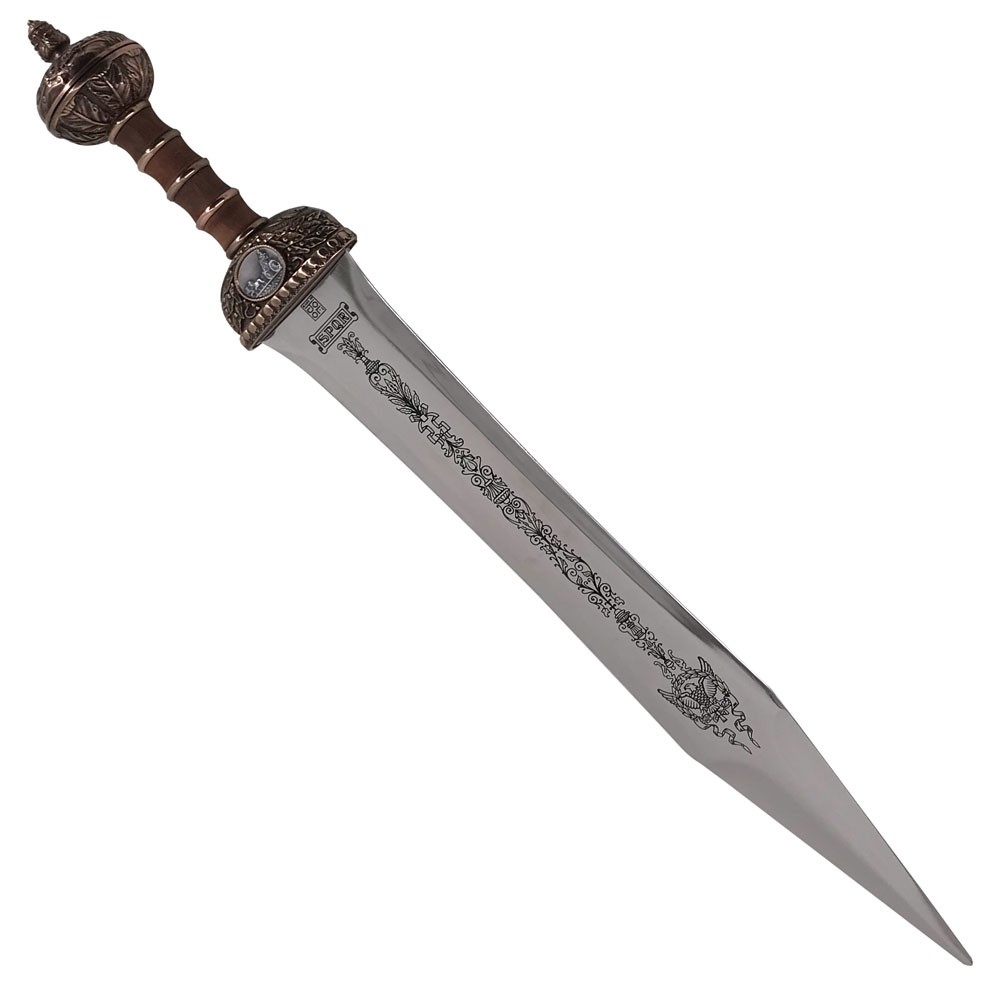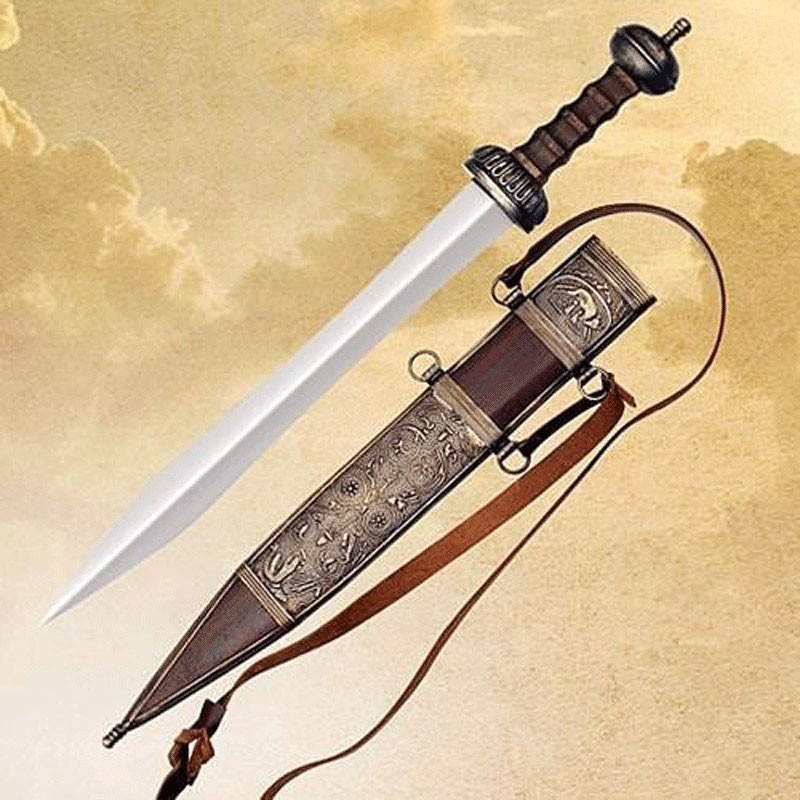What is a Gladius?
The Gladius is an iconic sword used by the Roman legions, famous for its efficient design and crucial role on the battlefield. In this article, we explore its history, features, and military use in ancient Rome.
Origin and Design
The Gladius is inspired by the Hispano-Celtiberian sword, known as the gladius hispaniensis. This short and light sword was adopted by the Roman legions during the Punic Wars, enhancing their combat effectiveness. The standard length of the Gladius was about half a meter, although they could be customized to fit each soldier's height.
Characteristics
- Straight and Wide Blade: The blade was straight and considerably wide, making it a lethal weapon in the hands of a trained legionary.
- Double Edge: Its double-edged design allowed legionaries to use it for both thrusting and cutting, giving it versatility in battle.
- Varied Grip: Depending on the rank, the grips could be made of wood, bone, or ivory, with a spherical pommel, providing a secure hold.

Use on the Battlefield
The Gladius was designed for quick attacks, particularly useful in the tight formation of legionaries. By sheltering behind the scutum (shield), soldiers awaited the right moment to deliver a swift thrust, using their Gladius to incapacitate opponents in seconds.
Adaptations and Evolution
As the Roman Empire expanded, the design of the Gladius evolved. One of the most recognized variants is the Mainz Gladius, noted for its straight blade and distinctive disc-shaped pommel, adapting to different needs on the battlefield.

Historical Impact
The Gladius was not only a key tool for the victories of the Roman legions but also symbolizes the strength and discipline of the Roman army. Although it was eventually replaced by the spatha in the late Imperial period, its legacy lives on as one of the most effective and iconic swords in military history.
| Features | Description |
| Length | Approximately 50 cm |
| Blade | Straight, wide, and double-edged |
| Grip | Wood, bone, or ivory |
















